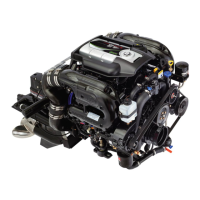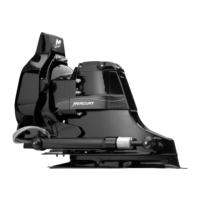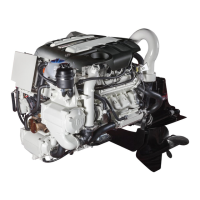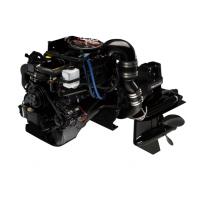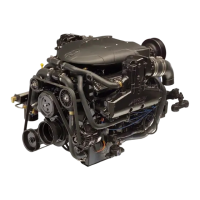Section 3 - On The Water
Page 44 90-864195070 JUNE 2007
Good Ventilation
Ventilate the passenger area, open the side curtains or forward hatches to remove fumes.
1. Example of desired air flow through the boat.
mc79553-1
Poor Ventilation
Under certain conditions, permanently enclosed or canvas enclosed cabins or cockpits with
insufficient ventilation may draw in carbon monoxide. Install one or more carbon monoxide
detectors in your boat.
Although the occurrence is rare, on a very calm day, swimmers and passengers in an open
area of a stationary boat that contains or is near an operating engine may be exposed to
a hazardous level of carbon monoxide.
1. Examples of poor ventilation while a boat is stationary:
mc79554-1
a
b
a - Operating the engine when the
boat is moored in a confined space
b - Mooring close to another boat with
its engine operating
2. Examples of poor ventilation while a boat is moving:
mc79556-1
a
b
a - Operating the boat with the trim
angle of the bow too high
b - Operating the boat with no forward
hatches open (station wagon effect)
Basic Boat Operation (Non‑DTS Models)
Launching and Boat Operation
IMPORTANT: Install bilge drain plug prior to launching boat.
OPERATION CHART
Operation Chart
BEFORE STARTING AFTER STARTING WHILE UNDERWAY AFTER STOPPING
Install bilge drain plug.
Observe all gauges to
check condition of
engine. If not normal, stop
engine.
Observe all gauges to
check condition of engine. If
not normal, stop engine.
Turn ignition key to the
"OFF" position.
Open engine hatch.
Check for fuel, oil, water,
fluid and exhaust leaks.
Listen for the audio alarm.
Turn battery switch to the
"OFF" position.
Turn battery switch on.
Check shift and throttle
control operation.
Close fuel shut off valve.

